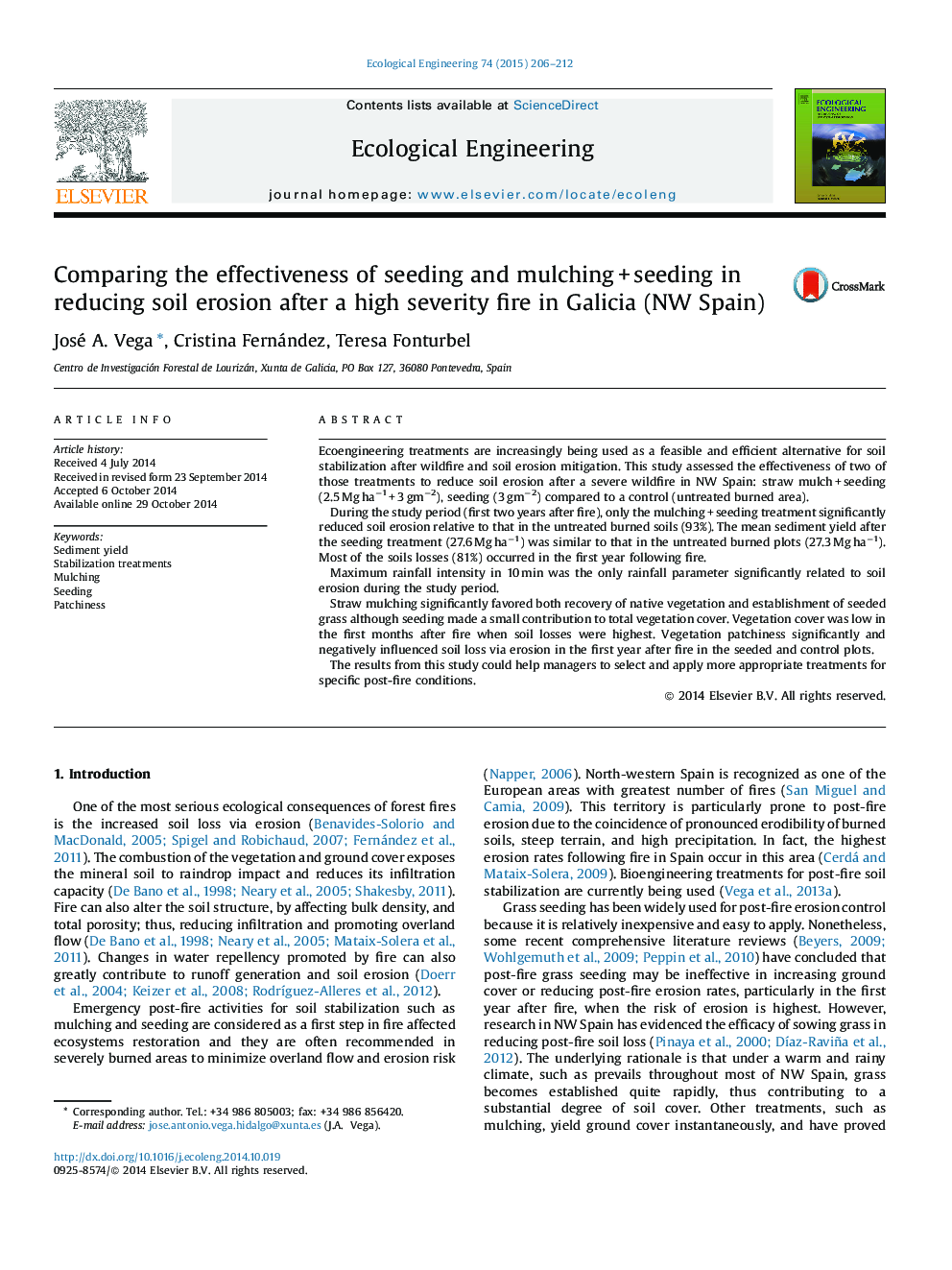| Article ID | Journal | Published Year | Pages | File Type |
|---|---|---|---|---|
| 4389309 | Ecological Engineering | 2015 | 7 Pages |
•Straw mulch effectively reduced post-fire erosion.•Seeding did not reduce soil loss.•Mulching favors vegetation cover recovery.
Ecoengineering treatments are increasingly being used as a feasible and efficient alternative for soil stabilization after wildfire and soil erosion mitigation. This study assessed the effectiveness of two of those treatments to reduce soil erosion after a severe wildfire in NW Spain: straw mulch + seeding (2.5 Mg ha−1 + 3 gm−2), seeding (3 gm−2) compared to a control (untreated burned area).During the study period (first two years after fire), only the mulching + seeding treatment significantly reduced soil erosion relative to that in the untreated burned soils (93%). The mean sediment yield after the seeding treatment (27.6 Mg ha−1) was similar to that in the untreated burned plots (27.3 Mg ha−1). Most of the soils losses (81%) occurred in the first year following fire.Maximum rainfall intensity in 10 min was the only rainfall parameter significantly related to soil erosion during the study period.Straw mulching significantly favored both recovery of native vegetation and establishment of seeded grass although seeding made a small contribution to total vegetation cover. Vegetation cover was low in the first months after fire when soil losses were highest. Vegetation patchiness significantly and negatively influenced soil loss via erosion in the first year after fire in the seeded and control plots.The results from this study could help managers to select and apply more appropriate treatments for specific post-fire conditions.
